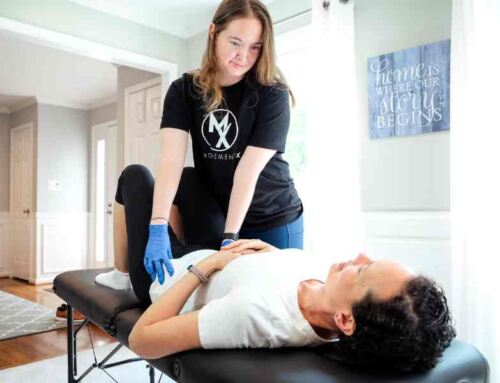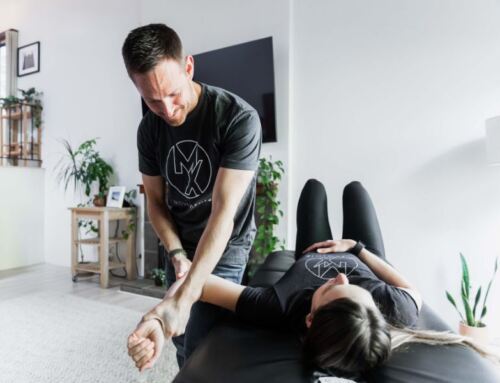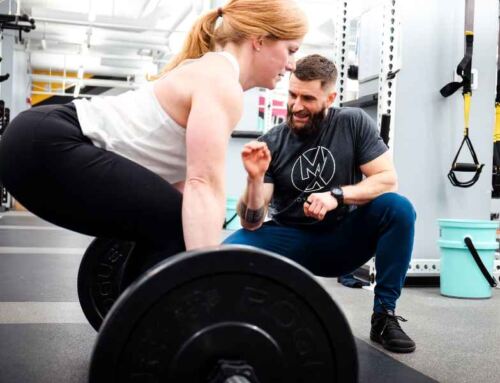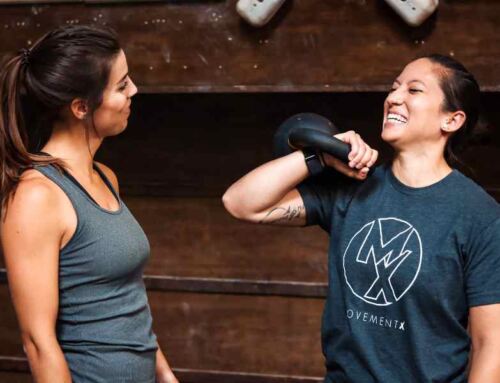Building The Habit of Movement
I just celebrated the 10-year anniversary of the Brain Trust Book Club (BTBC), which has brought together myself and some of my oldest friends! BTBC was founded at the wedding of our dear friend to bring old friends back together in the name of good books. We have had many iterations of the BTBC – phone chats, FaceTime, and destinations (like my wedding in Curacao!). We’ve enjoyed a sliding scale of participants who read the books to varying degrees (shout out to Joey TLDR) – and one constant is that we inevitably pick some not-so-great books.
After reviewing the list of a decade of BTBC busts, I was delighted to come across a book that has surreptitiously shaped every facet of my life: The Power of Habit by Charles Duhigg.
In The Power of Habit, Duhigg speaks on how subconscious routines shape our individual, organizational, and societal lives. As the text develops, Duhigg highlights the ever-present role of habits in our daily lives, referencing that roughly 40% of our daily actions are habits [1].
Reflecting on my list pulled an insight into stark focus: I am trying to help you create movement as a habit.
Because movement is a habit. Every day I engage in discussions about:
- How to use movement for pain relief (with my patients)
- How to use movement to increase activity levels for weight loss or muscle gain (with my health coaching clients)
- How to use movement to release pent up energy (with my children)
I personally rely on movement in the following ways:
- Bookend the day: I walk my daughter to school, walk to pick up the kids from daycare/after school
- Fidget: Time between patients provides an opportunity to walk around the block
- Exercise preparation: 5-10 minutes before workout to practice the positions of interest in the day’s workout
- Exercise: My lifeblood!
- Monkey See, Monkey Do: Playtime with my children trying to emulate their myriad movement outlets
- Get the digestive juices flowing: Family walks after dinner
Movement is versatile, and with the right intentionality, we can even use movement to replace bad habits, like obsessive phone checking (one of my compulsions).
So who is this post for? While many people can benefit from more intentional habits, in this post I’ll focus on examples of:
- People who have pain/want to reduce pain
- People looking to improve overall health
- People who want to improve their movement performance
- People looking to improve their learning potential
First, though, let’s look at what habits are.
What Are Habits?
At a basic level, habits are the choices that each of us deliberately make at some point and then stop thinking but continue doing (often daily) [2]. We form habits so our brains can go on autopilot and conserve energy. The brain has a lot to do each day, what with controlling every process involved with our moment-by-moment survival, that it does not have time to perseverate on the act of brushing teeth, putting on underwear, and making kids lunch – and that only takes us to 7 am.
The brain looks for specific cues to trigger the autopilot mode and commences the habit feedback loop:
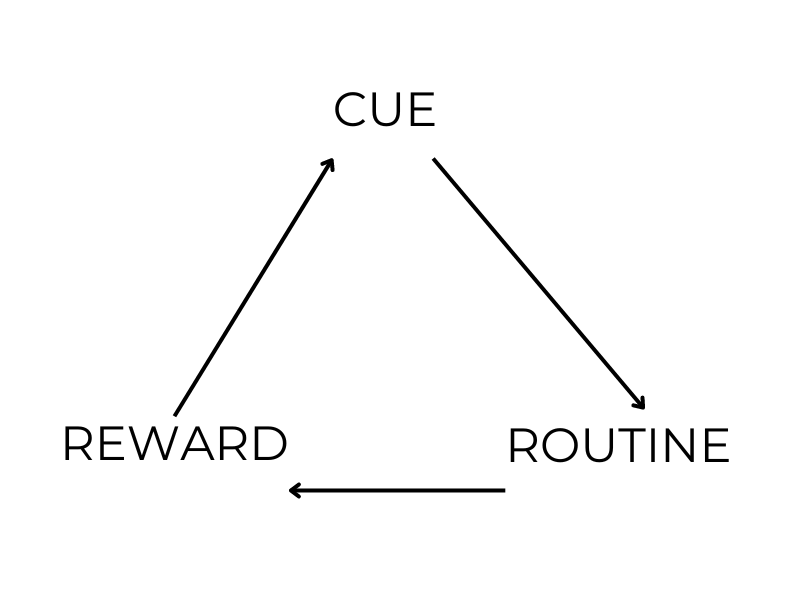
A cue is a trigger and it can be anything – visual, person, location, or emotional trigger (among many others) – and the first step to rewriting your habit loop is to identify your specific cues. For example, boredom is my cue to pick up my phone.
A routine is the reflexive response to the cue, and it can also be anything – my pitch is to make movement the keystone routine/habit. More on keystone habits below.
A reward reinforces the efficiency of the entire loop – my phone checking reward is the anticipatory excitement that something amazing will pop up in my inbox to distract me from the task at hand!
A key point to remember: Don’t try to eliminate old habits – instead, work to replace them.
Armed with knowledge of how this feedback loop works, we can start inquiring as to how our habits impact our lives, and make changes to them with awareness.
Unlocking Movement Through Keystone Habits
Another concept Duhigg discusses is the importance of keystone habits:
Small changes or habits that people introduce into their routines that unintentionally carry over into other aspects of their lives.
Duhigg also references exercise as an effective keystone habit – Preach!
My call to action is that we can all make frequent, brief, purposeful movement the keystone habit to unlock the mother of all keystone habits, exercise!
A Habit to Reduce Pain
Irritated tissues respond well to frequent and gentle motion, and this can often be a valuable tool to alleviate pain. If you are in pain, try the 20/20 rule – every 20 minutes, take a 20 second break to get up and move. Pick a movement that targets the irritated tissues in your body and move gently for 20 seconds, focusing on a relaxed breathing pattern throughout the movement. By focusing on your breathing, you override the tendency to tense up/hold your breath when you are in pain.
A Habit to Improve Overall Health
In his book Exercised: Why Something We Never Evolved to Do Is Healthy and Rewarding, Daniel Lieberman discusses the impact of physical activity on health and wellness, including the fact that a reduction in physical activity is an independent risk factor for morbidity and compression of health span [5]. Lieberman highlights the fact that Americans spend less than 1 minute daily engaging in vigorous activity, while modern day hunter gatherer tribes spend 20 minutes daily, by comparison (vigorous activity defined as 70-85% maximal heart rate) [5]. Why not use my boredom cue to trigger 30-40 seconds of mountain climbers in the name of health?
If the mountain climber is a bridge too far at this stage in your movement journey, can we compromise with some seated heel raises? According to an experimental physiological study [6], engaging in a fidget routine of seated heel raises throughout the day can lead to an improvement in several biomarkers, including markers of metabolic health such as post prandial (meal) glucose tolerance and insulin secretion. In layman’s terms, average sedentary individuals (without any training required) were able to complete 270 minutes of heel raises during an otherwise sedentary day and created noticeable changes in biomarkers compared to themselves on a day in which they completed no seated heel raises. Why not use sitting as a cue to trigger a heel raise movement habit?
A Habit to Improve Movement or Skill Performance
Anders Ericsson was a psychologist and researcher who studied the psychological nature of expertise and human performance. He described the value of purposeful practice in building new skills and abilities:
Purposeful Practice [3] has well defined goals, is focused, involves feedback, and nudges you out of your comfort zone.
While this type of practice is intended to be intense – high level of focus and demand in a 60-minute block of time – why not set the foundation for purposeful practice with a couple of minutes of movement practice every 30-60 minutes?
Let Amelie and Anders be your gymnastics guides!
A Habit to Improve Learning and Productivity
Brain coach, Jim Kwik, has dedicated his personal and professional life to helping people learn better. In his book, Limitless, Kwik laments the oft used and less-than-stellar approach of burning the midnight oil the night before the exam, trying to “learn” as much as you can in one block of time. Kwik teaches about the value of learning in chunks and espouses the approach of breaking up your learning time into 25 minutes of work followed by a 5-minute brain break. This approach builds on the Serial Position Effect to enhance learning [4].
Serial Position Effect: The tendency to most frequently remember the first and last chunk of information we are presented with.
Using the chunking approach, the learner can take advantage of multiple “first and last” chunks of information to enhance the learning experience.
The 5-minute brain break can be the learner’s cue to insert a movement habit, such as a walk around the block/office/etc. Or 5 minutes of mountain climbers?!
Movement Routine: Keys to Long-Term Sustainability
Establishing a new habit loop may seem simple, but it is not easy. Duhigg paves the way by highlighting some keys to successful habit change [2]:
- Start by identifying a habit loop you are trying to replace.
- Use the same cue, insert a new habit, and provide the same reward
- Build belief that you can accomplish your habits—belief is what makes habits stick in the face of stress
- Build your community—it’s easier to make a habit stick in the face of stress when you have a movement support system. Two can be a community, so recruit a movement buddy to embark on the journey with you.
Here’s what my habit loop looks like:
- Identify the habit loop: Checking my phone due to boredom anticipating the reward of something exciting on my phone.
- Using boredom as my cue, I insert a new habit: a calisthenic movement chosen by my daughter.
- Provide the same reward: Anticipatory excitement that I can tumble with my gymnastics-loving daughter.
- Belief—There is a movement ninja inside every one of us. Set your ninja free!
- Community—The MovementX community, my family and friends.
Movement can be the mother of all keystone habits. Whether you are attempting to reduce pain, improve your health, or alleviate your boredom, choose movement (until it becomes a subconscious habit)!
Just identify the cue → habit → reward loop that you can replace with movement, mix in some belief, with a dash of community, and a world of opportunities awaits!
References
- Neal DT, Wood W, and Quinn JM. Habits – A Repeat Performance. Current Directions in Psychological Science 15, no 4 (2006): 198-202.
- Duhigg C. The Power of Habit: Why We Do What We Do in Life and Business (2012)
- Ericsson A and Pool R. Peak: Secrets from the New Science of Expertise (2016)
- Kwik J. Limitless: Upgrade Your Brain, Learn Anything Faster, and Unlock Your Exceptional Life (2020)
- Lieberman DE. Exercised: Why Something We Never Evolved to Do Is Healthy and Rewarding (2021)
- Hamilton, Marc T. et al. A potent physiological method to magnify and sustain soleus oxidative metabolism improves glucose and lipid regulation. iScience, Volume 25, Issue 9, 104869 (2022).
About the Author
Dr. Dan Alcorn is a physical therapist with MovementX in Northern Virginia. He is a Board-Certified Specialist in Orthopedic Physical Therapy and is also fellowship-trained in the care for upper extremity athletes. Dan Alcorn treats patients at Patriot CrossFit in Arlington, VA, and has a strong passion for improving people’s confidence through healthier movement, lifestyle choices, and longevity.




